The Copper Coinage of Our First President, Part I
As early as the 18th century George Washington was widely depicted on our nation's early coinage.
IN THE LATTER PART OF THE 18th CENTURY, George Washington was a Colossus in Americans’ minds. This wealthy farmer from Virginia was a surveyor, fought admirably in the French and Indian Wars, and when the newly-formed nation looked for a leader, Washington went willingly to the forefront. The British army and navy were vastly superior, perceived as the best in the world at that time, yet Washington inspired farmers and tradesmen to leave their plows in the fields and their workshops unattended and defend the idea of an American nation based on liberty.
His accomplishments were legendary. After forcing the surrender of one the Great Britain’s greatest generals, Lord Charles Cornwallis, in August of 1781 in Yorktown, Virginia, effectively ending the American Revolutionary War, to being named President of the First Constitutional Convention, he was a man of mythic proportions.
The Coinage Act of 1792, establishing a United States Mint, positions for coin minters and even for American coinage itself was still a decade away when both coin designers, minters and other entrepreneurs began to create ‘coins’ for use in the American nation of colonies. The strong central government was still some time away, but the need for an American coinage was great. Coins from many foreign countries circulated in America at that time as there was no substitute.
Entrepreneurs began to strike copper medals and ‘coins’ as some even bore denominations on them, in hopes of their designs catching the eye of the new government officials and perhaps becoming coinage. Some of these pieces bore Washington’s likeness, which he publicly frowned upon. Washington didn’t want America’s coins to remind people of Britain’s coins, bearing a portrait of the king. Washington wanted allegorical representations of Liberty to grace our coinage.
Nevertheless, a number of copper pieces bearing portraits of George Washington were struck and they all were intended to honor the legend of George Washington. Many of these ‘coins’ circulated as coinage, as evidenced by the large number of them that display over two centuries worth of healthy wear. Whether they were struck as potential coinage for America, as a tribute to Washington, or as part of the British series of Conder Tokens, portraying personages and historical events, they form a unique collection of historical Americana.
We will examine not only the history of these coins but how assembling a collection of them is such a worthwhile task for those of us who love American history.
1783 GEORGIUS TRIUMPHO
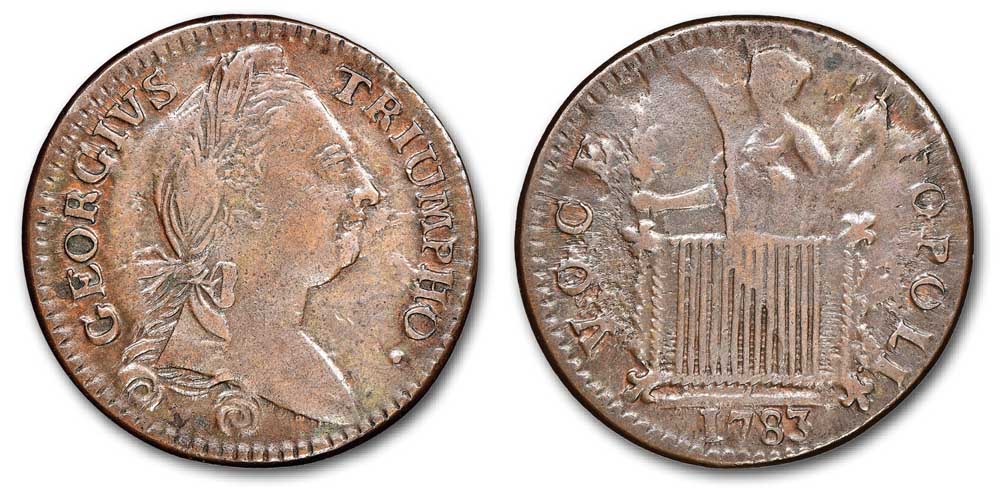
One of the earliest dated examples, whether the date is accurate or merely
symbolic, is the 1783 Georgius Triumpho Token. These tokens are an enigma.
The obverse depicts a portrait of King George III of England, though it is
often misattributed as George Washington. The words “GEORGIUS TRIUMPHO”
adorned the peripheries of the obverse.
The reverse depicts a standing goddess behind a railing of 13 bars (representing the 13 American colonies) and a fleur-de-lis (representing France’s aid to America in the war). “VOCE POPULI” (Voice of the People) with the date “1783” below. This token is often found well-worn indicating it circulated. Examples have been found in quantity in both colonial America and across the British Isles.
1783 UNITY STATES CENT
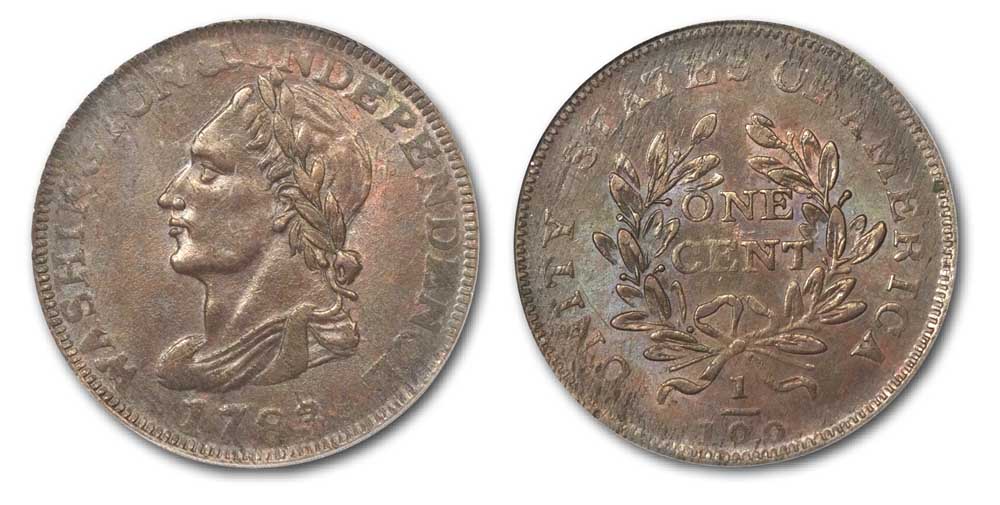
Another 1783-dated coin is the Unity States cent. The obverse of the cent
depicts a Draped Bust portrait of George Washington, wearing robes as well
as a laurel wreath on his head. Washington faces left with “WASHINGTON &
INDEPENDENCE” around the periphery and the date “1783” below.
The reverse is similar in design to early United States large cents as it depicts a wreath with “ONE CENT” inside, on two lines. Around the periphery is “UNITY STATES OF AMERICA.” As these ‘coins’ were likely struck in England, the word “UNITY” may have been substituted instead of “UNITED” in order to avoid concerns of counterfeiting by the manufacturer.
1783 MILITARY BUST COPPERS
There are a number of varieties of what are known as the Washington Military Bust coppers. There are both Large and Small Bust varieties as well as those with Plain or Engrailed edges. The obverse depicts a bust of George Washington, facing left, with “WASHINGTON & INDEPENDENCE” above and “1783” below.
The reverse depicts a seated figure (Miss Liberty) also facing left with a pole and cap in her left hand and holding up a laurel branch with her right. The words “UNITED STATES” are on the upper periphery. They were likely struck in England and circulated there and also in the United States. Given the design and the sophistication of their manufacture, the belief is that although dated 1783, they may have been struck as late as the 1820s.
1783 DRAPED BUST COPPERS
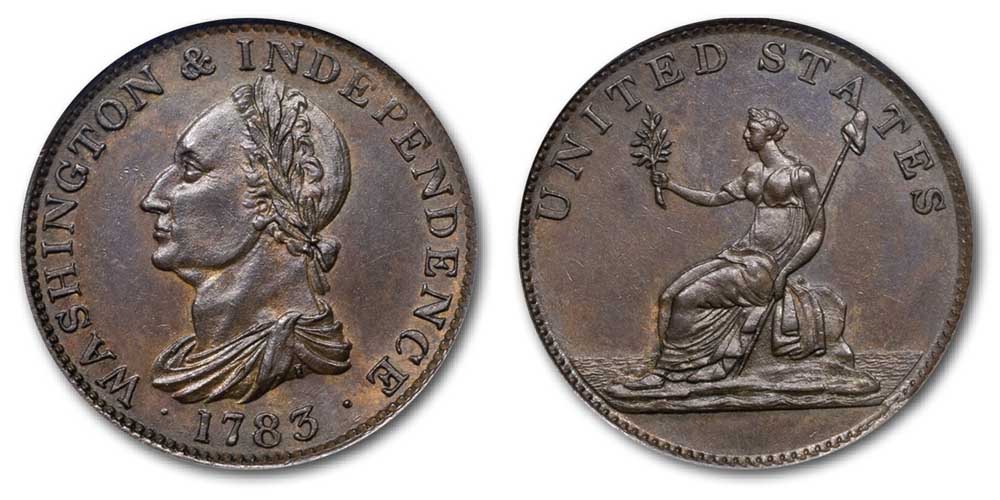
Another design similar to the Military Bust coppers are the Draped Bust
Coppers. They use a similar bust portrait of George Washington that appeared
on the Unity States Cent, facing left, with “WASHINGTON & INDEPENDENCE”
on the upper periphery and “1783” on the lower.
The reverse, however, also depicts a seated figure facing left, though “she” is larger than the one depicted on the Military Bust copper. Above her is “UNITED STATES.” The Draped Bust Coppers also have a number of collectible varieties as well—No Button, With Button, Plain Edge, Engrailed edge.
UNDATED DOUBLE-HEAD CENT
A related coin is the undated (but assumed 1783) Washington Double Head Cent. This copper has a bust of George Washington, in military coat, wearing a laurel wreath and facing left. The obverse has the word “WASHINGTON” above the portrait. The reverse has “ONE CENT” above the portrait. Below the portrait, on both sides is an ornamental eight-pointed star.
This copper also comes in plain and engrailed edge varieties.
1784 UGLY HEAD TOKEN

This Washington medal or token is believed to be of American origin. It
would be atypical for the much more sophisticated and talented coiners in
Britain to have created such a crude piece. The obverse has a seemingly bald
headed portrait of George Washington, facing right. The portrait is more of
an outline of a profile, there is little to no details to adequately
identify this as Washington. Around the border in slightly uneven lettering
is “WASHINGTON THE GREAT D.G.” The “D.G.” may be a reference to British
royal coinage representing the Latin phrase Dei Gratia, meaning “by the
grace of God.”
The reverse depicts linked rings, similar to those on a 1776 Continental Dollar, but with colony positional differences. It is not a true copy of that Dollar reverse. These were struck in both copper and white metal and is very rare.
1791 LARGE EAGLE CENT
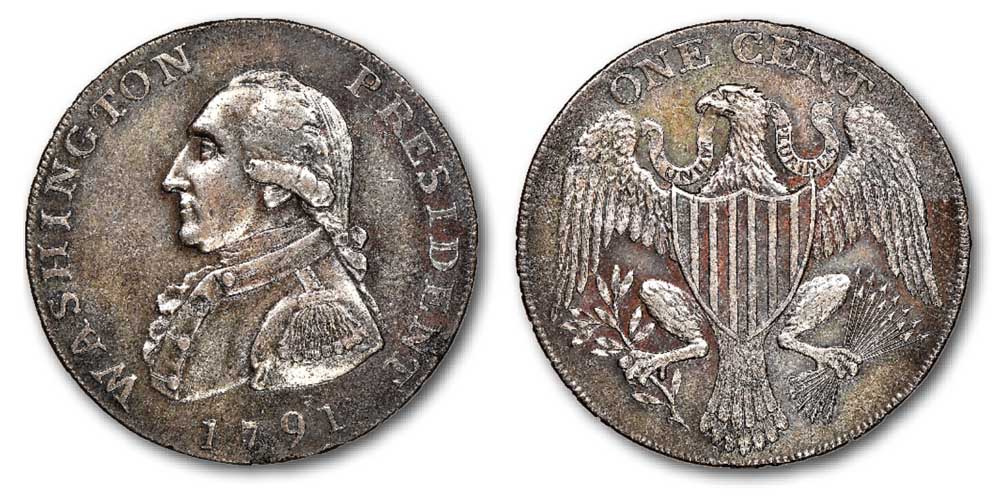
The 1791 Large Eagle Cent was struck in England, with evident quality and
styling. In that year, our early Congress debated the merits of enacting a
Coinage Act. Alexander Hamilton proposed that the President establish a
national mint to strike American coinage. It also defined the role of key
players at the Mint as well as the coinage that should be struck.
Washington certainly believed that striking our own coinage would be instrumental in creating a national identity as well as for encouraging trade with this new country. Many British companies, such as Boulton and Watt, operating as the Soho Mint, believed that Congress could be persuaded to but their ideas for American coinage and that they not only could produce coins for less expense, but they could also manufacture a vastly superior product.
The 1791 Large Eagle Cent depicts a mature George Washington on the obverse, facing left. The verbiage “WASHINGTON PRESIDENT 1791” was placed around the perimeter of the obverse.
The beautifully engraved reverse depicts an American bald eagle, heraldic style, with an American shield covering the eagle’s body, downward pointing wings, the words “ONE CENT” above and arrows in one talon and an olive branch in the other. In the eagle’s beak is a ribbon on which is inscribed “E PLURIBUS UNUM.”
There are plain and lettered edge varieties of this coin.
The quality of the design on both sides was striking and superior to all that had come before in the area.
1791 SMALL EAGLE CENT
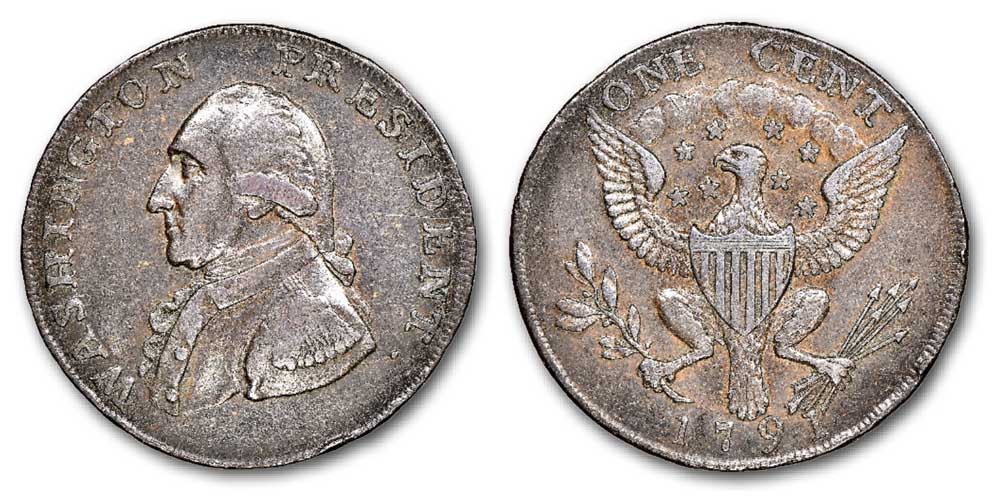
Like its companion piece, this coin was also thought to have been struck by
the same Soho Mint. The obverses of the two coins are identical but the
reverses differ in the eagle itself. Whereas the Large Eagle Cent has an
eagle that is the dominant feature of that reverse, the Small Eagle Cent
still has a heraldic eagle, but the bird is much thinner and more in
proportion to the size of the coin.
The Small Eagle has upward spread wings, between the wings are eight five-pointed stars, and above the stars are a bank of clouds extending from wing to wing. The talons continue to hold arrows and an olive branch. This eagle looks more like one on a governmental shield than the Large Eagle variety.
There are multiple varieties that have plain edges and lettered edges. The lettered edges may state “UNITED STATES,” or various terms such as payable at one or more locations or at a warehouse.
>> In part two of this study, we will examine additional pieces including the 1792-dated Washington coppers.
Images courtesy of Heritage Auctions, HA.com and PCGS.com

Download the Greysheet app for access to pricing, news, events and your subscriptions.
Subscribe Now.

Subscribe to The Greysheet for the industry's most respected pricing and to read more articles just like this.
Author: Michael Garofalo


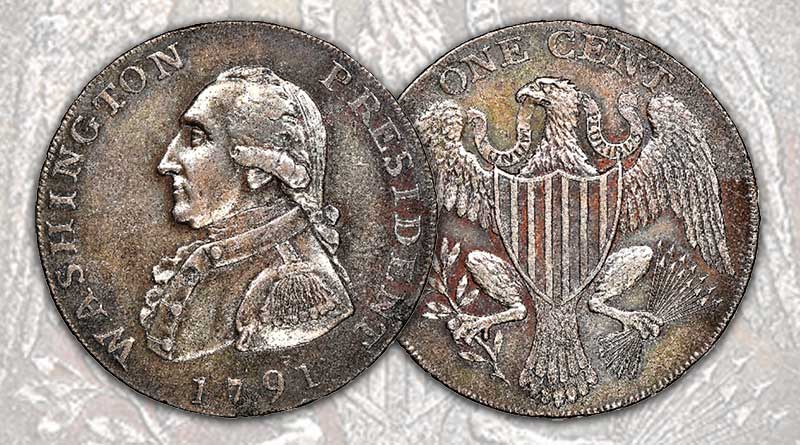






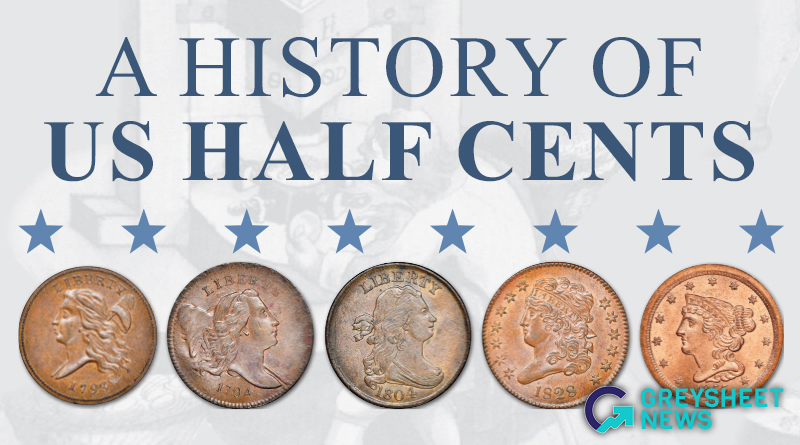
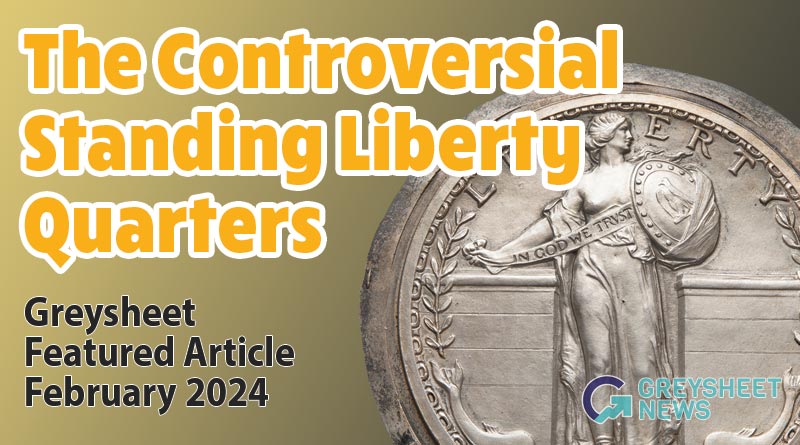
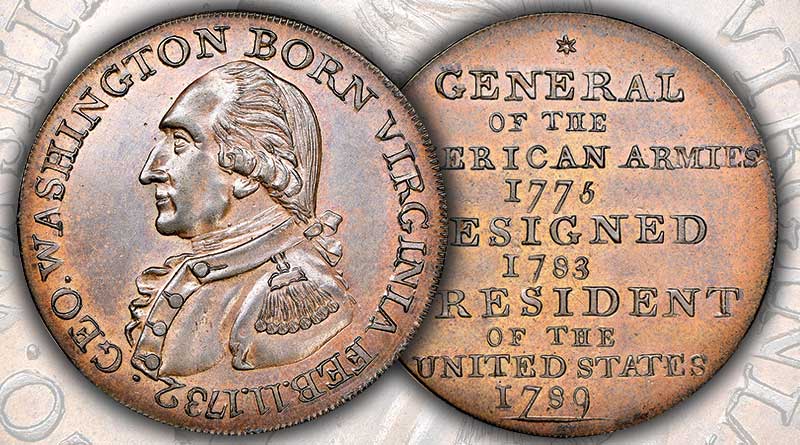
Please sign in or register to leave a comment.
Your identity will be restricted to first name/last initial, or a user ID you create.
Comment
Comments